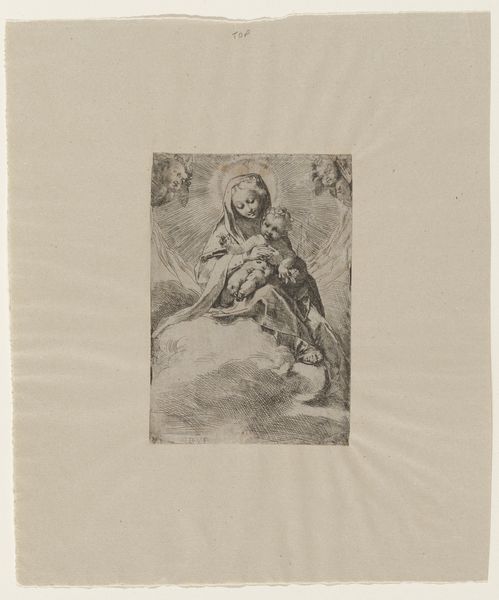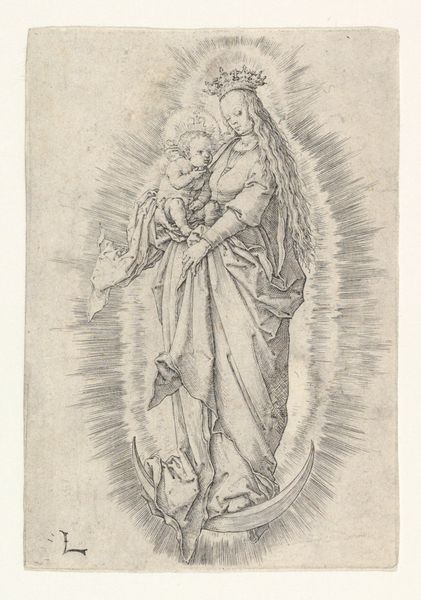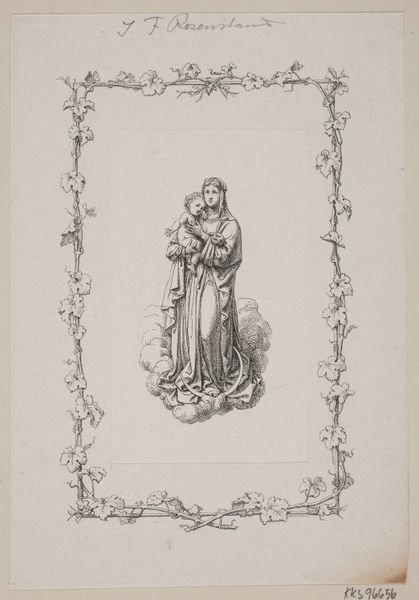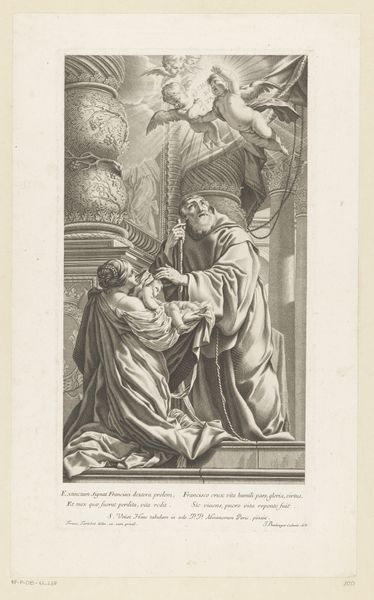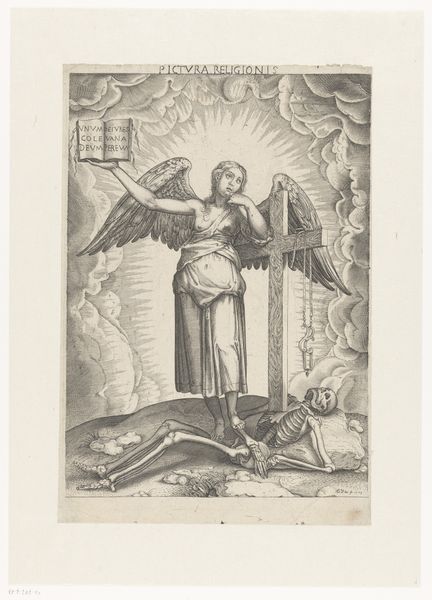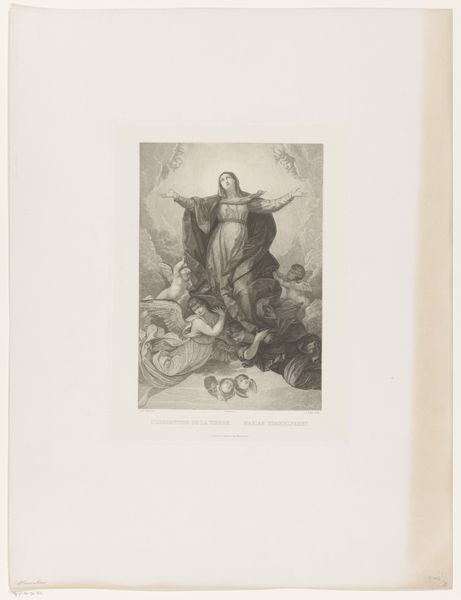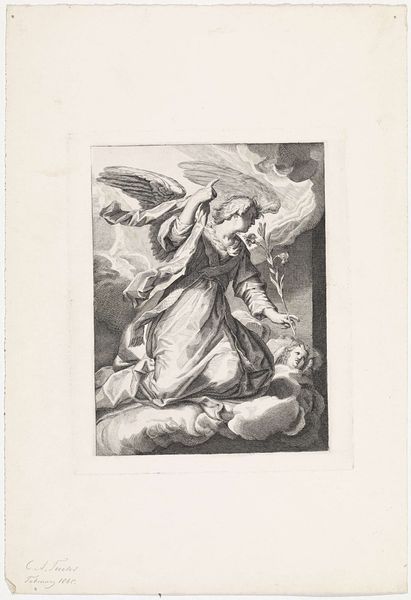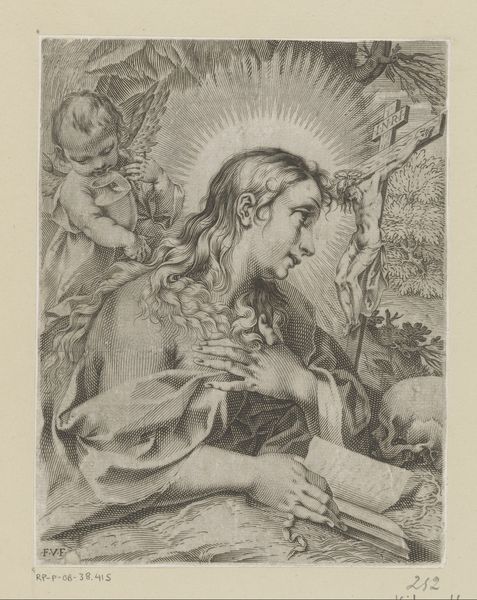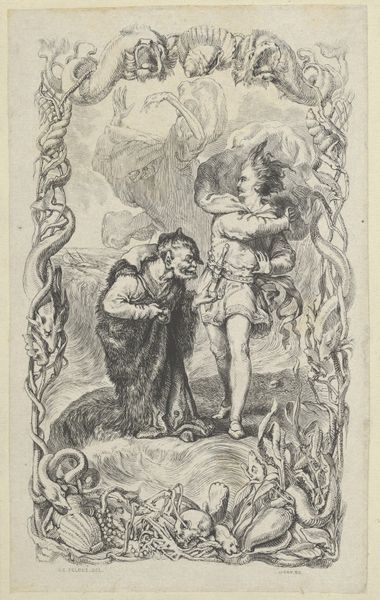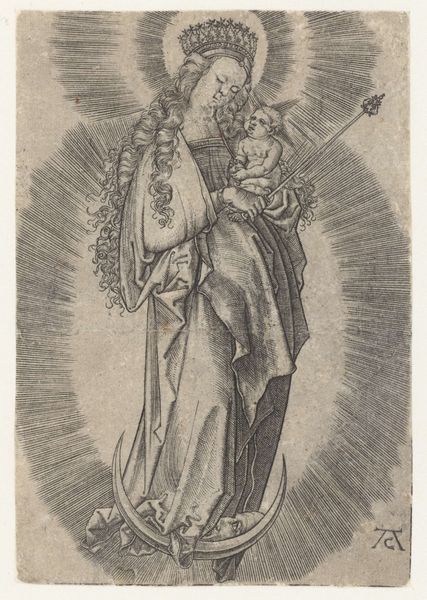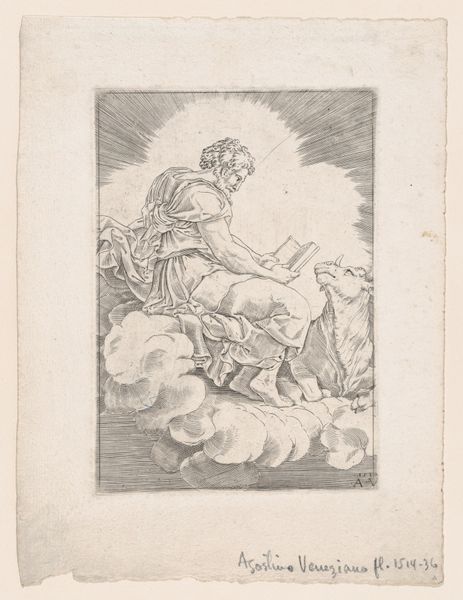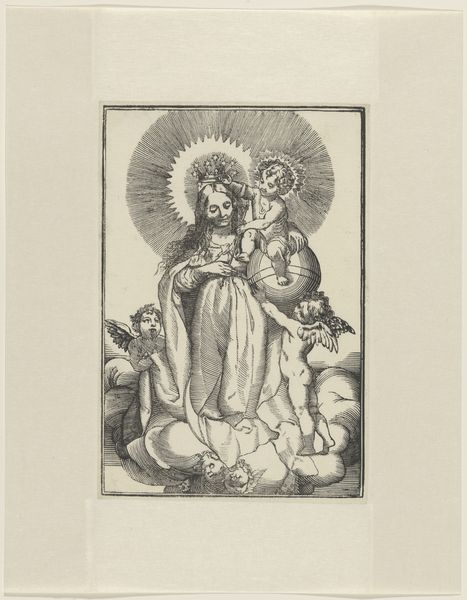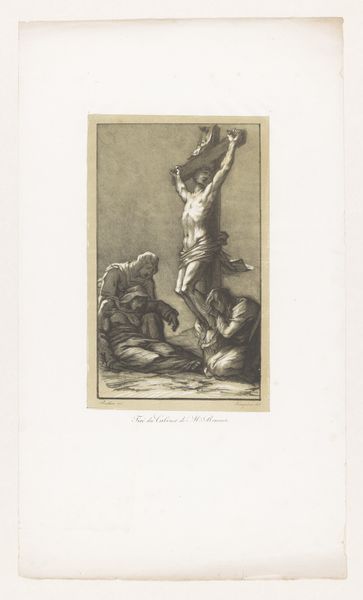
print, engraving
#
portrait
#
baroque
# print
#
figuration
#
history-painting
#
italian-renaissance
#
engraving
#
miniature
Dimensions: height 189 mm, width 126 mm
Copyright: Rijks Museum: Open Domain
Curator: Looking at this print, I immediately notice the stark contrast between the detailed rendering of Mary and Child and the ethereal background filled with cherubic faces. Editor: This is Vespasiano Strada's "Maria met Kind op Maansikkel," created sometime between 1592 and 1613. It's currently held in the Rijksmuseum. The engraving depicts Mary holding the Christ child, standing on a crescent moon. It’s got a strong Italian Renaissance aesthetic. Curator: Yes, the crescent moon motif certainly evokes a rich tapestry of Marian symbolism. It pulls together aspects of purity, and perhaps, even the celestial, with the lunar cycle. Given its Italian Renaissance context, it’s clearly rooted in established iconographic traditions, though I think it could also be understood in terms of intersectional gender theory too, and a more personal depiction of the Mother and child dyad as understood and performed by the engraver. Editor: Precisely. The imagery is potent. The crushing of the serpent beneath her feet, even though faint, is still there representing the defeat of evil, a trope very common to depictions of Mary. This work echoes so many Renaissance and Baroque representations that the continuous visual tradition really jumps out. Curator: Do you think the placement of these chubby faced babies hints to an overall mood? Or just Baroque extravagance? The almost overwhelming cherubic faces that frame Mary suggest a certain idealization, or maybe even commentary on, maternal representation. It gives an image to the overwhelming expectations surrounding mothers, or the "perfect" motherhood image often socially perpetuated. Editor: That multitude of cherubs speaks to divine support and a very crowded vision of the sacred, almost overwhelming in the scale of their visual presence. I wonder what other visual references Strada pulled for inspiration in his day. It would be so valuable to see what other pieces resonated with him to compare and examine visual history even more thoroughly. Curator: Absolutely. Understanding the context further would only help expand and further the reach and understandings we have for the role this visual language continues to play for centuries to come. Editor: Well said. I will keep an eye on future findings.
Comments
No comments
Be the first to comment and join the conversation on the ultimate creative platform.
